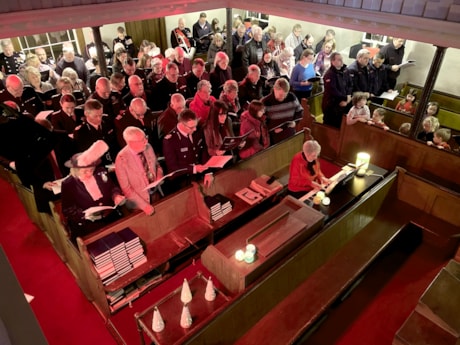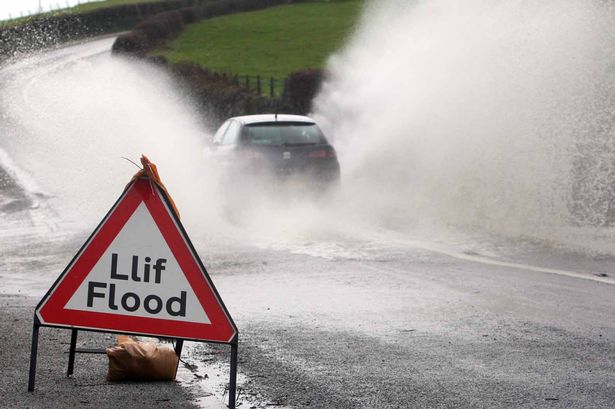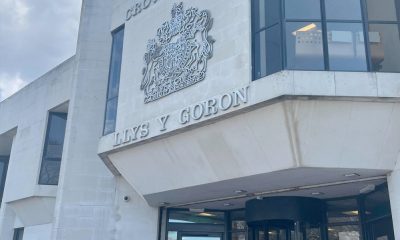Community
Quayside building and community hub works approval expected

PLANS to refurbish a quayside building in Haverfordwest’s conservation area with works including an outdoor terrace, as well as works to the existing Haverhub community hub are expected to be approved next week.
The application, by Gitti Coats, for the refurbishment and extension of Haverfordwest’s Quayside Building to form multi-functional community spaces, along with an extension to the bar building to create a first-floor terrace at Quay Street is recommended for conditional approval at the November 5 meeting of Pembrokeshire County Council’s planning committee.
A report for planners says: “The application site comprises of two existing buildings and associated outdoor area located within the Quayside area of Haverfordwest. One of the buildings is known as the Quayside Building, which fronts the quayside and is currently vacant. The second building, which currently addresses Quay Street to the west, is known as the ‘Haverhub’ community hub.”
The Grade-II-listed Haverhub building, is a former post office, described as “a finely designed neoGeorgian Post Office in Bath stone,” built in 1934-6 for the General Post Office (GPO), and “is an example of the high quality neo-Georgian post offices of the inter-war period”.
A report for planners says the Quayside building would increase in height from approximately 7.9 metres to 11.7 metres with the creation of a second floor and accommodation within the roof space, the ground floor utilised for space in connection with a performance space within the Haverhub building.
To the first floor would be a multi-function room, which would also connect to a proposed bar area and associated first floor terrace which includes outdoor seating. The second floor of the Quayside building would include a second multi-function and meeting room.
The main Haverhub building would be extended to provide a gallery and entrance lobby. The existing bar and kitchen would also be extended.
“The proposed development would still allow the Haverhub building, including its ornate features, to be viewed within the context of the wider conservation area, whilst protecting the setting of the listed building and the surrounding conservation area,” the report says, adding: “It is considered that the scheme creates an important and attractive enhancement to this part of the Conservation Area.”
The Haverhub building was granted a change of use to a community hub in 2018, with the use and building benefiting from a ground floor internal outdoor courtyard area, which is located below the proposed first floor terrace.
The report says that, as there is already an outside space for the community hub to utilise “the addition of the first-floor seating area would not create a significantly greater impact in terms of noise generation or impact on amenity than the existing outdoor area to the ground floor”.
The proposal is recommended for conditional approval.
Community
Festive creativity shines as Kurtz MS meets card competition winner

SAMUEL KURTZ, Member of the Senedd for Carmarthen West and South Pembrokeshire, visited Pembroke Dock Community School on Friday 12th December to present a prize to the winner of this year’s Christmas Card Competition.
The competition invited pupils to design a festive Christmas card, with entries received from schools across the area. The standard of artwork was exceptionally high, showcasing the creativity, imagination and talent of young people in the community.
During the visit, Samuel Kurtz congratulated the winning pupil and thanked all those who took part, as well as the teachers and staff who supported the competition. Each child who entered also received a certificate in recognition of their hard work and effort.
Speaking after the presentation, Samuel said, “It was a real pleasure to visit Pembroke Dock Community School today and announce the winner of my Christmas Card competition. This year the winner is Mair Moseley, aged 10, and she designed a wonderful Santa image that really stood out. She has won a chocolate selection set and a £20 book token to enjoy over Christmas.”
He added, “ The creativity and enthusiasm shown by all the children was fantastic, and it made choosing a winner extremely difficult. I want to congratulate all the entrants and thank the staff for their ongoing support.”
Pembroke Dock Community School Headteacher, Mrs Katie Crockford-Morris, added, “We were delighted to welcome Samuel Kurtz MS to the school to present the prize. The children thoroughly enjoyed taking part in the competition, and they were incredibly proud to receive their certificates.”
The winning design will now be used as Samuel Kurtz’s official Christmas card this year, with one copy already on its way to His Majesty, King Charles.
Community
Narbelles WI support Food Bank with festive donation

Group marks December meeting with charity collection and Christmas celebrations
NARBELLES WI rounded off the year with a festive December meeting featuring a bring-and-share buffet, party games and a Secret Santa gift exchange.
Members also used the occasion to support families in need across the county, collecting food items and presenting a £120 cheque to Ann Watling from Pembrokeshire Food Bank. The donation represents the proceeds of the group’s bucket collection during Narberth Civic Week 2024.
A spokesperson for the WI said the group was delighted to finish the year “with fun, friendship and a chance to give something back to the community.”
(Photo: Narbelles WI members presenting the cheque to Ann Watling, Pembrokeshire Food Bank.)
Community
Annual charity carol service raises funds for good causes

MID and West Wales Fire and Rescue Service held its annual Charity Carol Service on Wednesday (Dec 10) at Ebeneser Baptist Chapel in Crymych.
The event brought together members of the local community alongside Fire Service staff for an evening of carols, readings and festive refreshments, marking the Christmas season in a warm and inclusive atmosphere.
This year’s service supported two important charities — the Fire Fighters Charity and Cancer Research Wales — with all proceeds going directly towards their ongoing work.
A total of £597 was raised on the night, which will be shared equally between the two charities.
The Service thanked the congregation at Ebeneser Baptist Chapel for hosting the event, as well as everyone who gave their time, support and generosity to make the evening such a success.

-

 Crime6 days ago
Crime6 days agoPhillips found guilty of raping baby in “worst case” judge has ever dealt with
-

 Crime5 days ago
Crime5 days agoKilgetty scaffolder sentenced after driving with cocaine and in system
-

 Crime5 days ago
Crime5 days agoHousing site director sentenced after failing to provide breath sample following crash
-

 News20 hours ago
News20 hours agoDyfed-Powys Police launch major investigation after triple fatal crash
-

 Crime5 days ago
Crime5 days agoMotorist banned for three years after driving with cannabis in system
-

 Crime2 days ago
Crime2 days agoMan spared jail after baseball bat incident in Milford Haven
-

 Education4 days ago
Education4 days agoTeaching assistant struck off after asking pupil for photos of her body
-

 News7 days ago
News7 days agoJury retires tomorrow in harrowing Baby C rape trial























